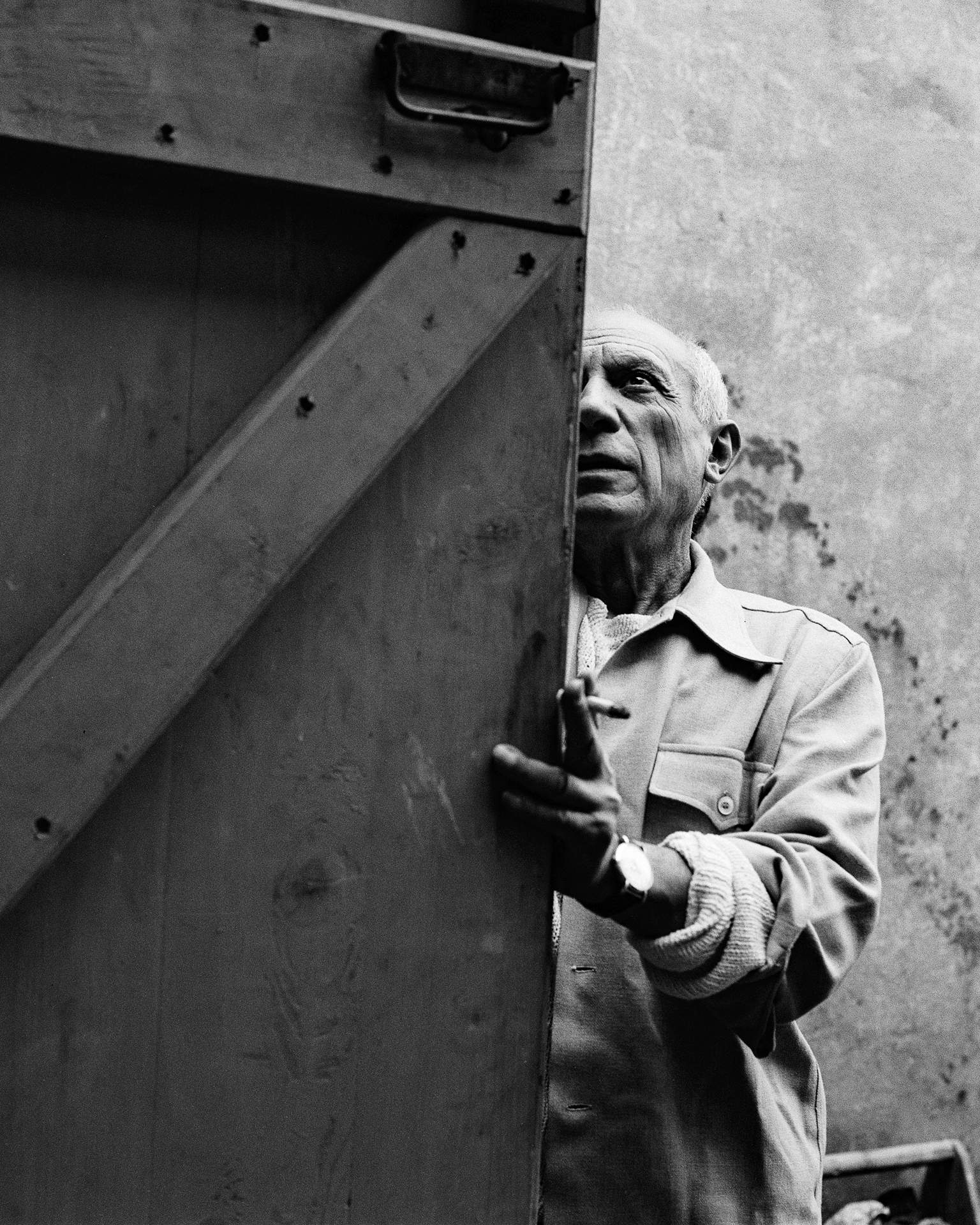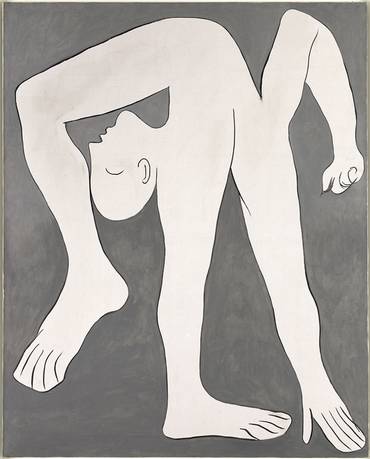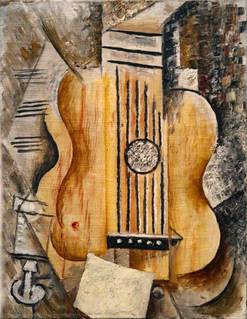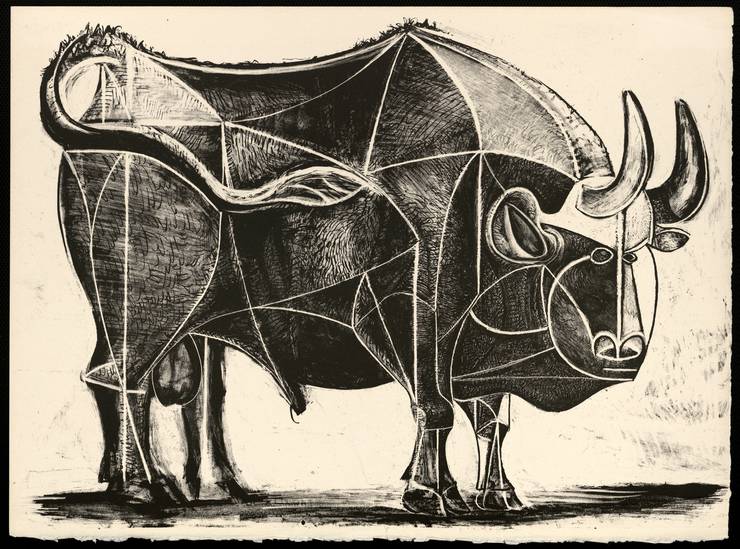Turespaña Monocle
PICASSO
Sketches of Spain
Spain inspired Picasso. Come, find your inspiration.
Like one of his Cubist paintings, everyone who looks at Pablo Picasso sees a different side of this most versatile and dynamic of artists. Across a 70-year career, he constantly reinvented his style across many distinct periods. One constant, however, was the influence of his homeland. Picasso remained on the move but the spirit of Spain – and his birthplace of Málaga in particular – lingered in every brushstroke. As the 50th anniversary of his death is marked by the Picasso Celebración 1973-2023 programme, there has never been a better time to find your own inspiration in the great master’s work.

Impressions of the city
Pablo Picasso was born in Málaga on 25 October 1881. Though his family moved away from the Andalusian city before the young artist turned 10, he would always consider himself a malagueño at heart. In fact, many of his formative interests, from the pulse of flamenco to the thrill of the bullfight, would recur in his greatest artworks throughout his inspirational life.
1
nightlife
Set the scene
When Picasso was a child, his father, Don José Ruiz Blasco, taught at the San Telmo School of Fine Arts in Málaga (now the Ateneo de Málaga cultural centre). Visiting his father’s workshop gave him the confidence to call himself an artist and use all aspects of his life as fuel for his creativity. In the summer of 1899, Picasso returned to Málaga with his friend, Carles Casagemas, to experience the city’s nightlife first-hand. He captured it in a string of early drawings that set the scene for the beginning of his Blue Period, a sombre collection of nightclub portraits and down-at-heel characters begun in 1901.


2
religion
Modern-day icons
Picasso’s childhood home in Málaga (a building that now houses the Museo Casa Natal Picasso) sits across the square from the 15th-century Parish Church of Santiago Apóstol, where the young artist was baptised. Although he became an avowed atheist, his Catholic upbringing would remain close to him throughout his life, as well as a constant source of imagery for his artworks. Early paintings depicted downtrodden characters as if saintly icons and the crucifixion became a frequent metaphor for death and sacrifice, while he regularly drew on his own family for mother-and-child compositions.
Picasso also found religion through the art of others. His formative experiences studying the work of fellow Spanish artists such as Zurbarán and Velázquez saw him hone compositions that were steeped in Catholic symbolism.
3
music
Rhythm of life

Rhythm pulses through Picasso’s work just as the golden age of flamenco was vibrating through Andalusia when the artist was born. According to his biographer John Richardson, Picasso learned to dance “rudimentary” flamenco in the gypsy quarter of Malaga, near the medieval Alcazaba palace, while his father regularly visited juergas (flamenco jam sessions) at the Café de Chinitas. Guitars and violins would become regular subjects in Picasso’s work, a shorthand for flamenco themes of love, death and anguish, yet he also employed more subtle references to the music. Dancers would fix their gaze on the audience, a trait that Picasso often used in his self-portraits, while the desolate mood of cante jondo defined his Blue Period paintings.
4
the beach
Playful side


Málaga is known as “the capital of the Costa del Sol” – the original sunshine coast – and Picasso’s family returned to spend their summers here throughout his teenage years. His youthful love of the beach regularly manifested itself in his paintings as a cartoon-like backdrop of yellow sand and deep blue Mediterranean skies, a shorthand for playful optimism. In fact, the artist is so intrinsically linked with the pleasures of la playa that a stretch of Málaga seafront was renamed the Paseo Marítimo Pablo Ruiz Picasso.
5
bullfighting
By the horns
Bullfighting was a lifelong passion for Picasso. He was taken to La Malagueta bullring as a child and his earliest surviving painting, made when he was just eight years old, depicts a picador. For Picasso, the bullfight was a potent symbol of his Spanishness and a dramatic display of flamboyant masculinity. That symbolism would develop across countless canvases and, from the 1920s onwards, he regularly depicted himself as a minotaur – a half-man, half-bull character that acknowledged his occasionally monstrous side. The artist remained fascinated by the spectacle. Even later in life, he famously sat in near silence while watching bullfights, lost in reverie and reverence. Today, visitors to Málaga can enjoy the action at La Malagueta, including the Corrida Picassiana, which was named after the city’s famous son.

In the frame
Nothing beats seeing a Picasso original up close: 50 years on, his brushstrokes still sparkle with life – as demonstrated by 10 inspiring exhibitions across Spain.

19.05
until 07.01.24
Picasso: Untitled
La Casa Encendida, Madrid
Fifty contemporary artists critique 50 of the Spanish master’s final works.
lacasaencendida.es
13.06
until 17.09.23
Picasso – El Greco
Prado Museum, Madrid
Explore the Greek artist’s influence on Pablo’s Blue Period and Cubist works.
museodelprado.es
21.06
until 17.09.23
Picasso’s Will: The Ceramics That Inspired The Artist
Museu del Disseny de Barcelona
Sixteen of his painted vessels in tandem with pieces from the collection.
ajuntament.barcelona.cat
21.06
until 01.10.23
The Ages of Pablo
Museo Casa Natal Picasso, Málaga
Chart his stylistic journey via the distinctive periods of his creative life.
museocasanatalpicasso.malaga.eu
01.09
until 30.11.23
Picasso vs Velázquez
Casa de Velázquez, Madrid
Pablo’s 1957 tributes to Diego’s Maids of Honour inspired this double header.
casadevelazquez.org
29.09
until 14.01.24
Picasso: Matter and body
Guggenheim Museum Bilbao
Explore the many ways that he used sculpture to express the human form.
guggenheim-bilbao.eus
03.10
until 24.03.24
The Echo of Picasso
Museo Picasso Málaga
Éric Troncy curates 30 artists inspired by Pablo’s sense of creative freedom.
museopicassomalaga.org
04.10
until 14.01.24
The Sacred & the Profane
Thyssen-Bornemisza National Museum, Madrid
Scenes of passion and violence contrast with master works that influenced him.
museothyssen.org
19.10
until 25.02.24
Miró – Picasso
Fundació Joan Miró and Picasso Museum, Barcelona
The two artists’ love of Barcelona is celebrated across both venues.
mirobcn.org; museupicassobcn.cat
14.11
until 04.03.24
Picasso 1906
Museo Nacional Centro de Arte Reina Sofía, Madrid
An optimistic celebration of his pivotal year that would change art forever.
museoreinasofia.es
ALL Images: © Sucesión Pablo Picasso, VEGAP, Madrid, 2023
Credits: © edwardquinn.com; Pablo Picasso, The Acrobat, 1930. Musée national Picasso-Paris. Óleo sobre lienzo; Pablo Picasso, Autorretrato, 1907. Narodni Galerie, Praga. Óleo sobre lienzo; Pablo Picasso, Guitarra “J’aime Eva”, 1912. Musée national Picasso-Paris. Óleo sobre lienzo; Pablo Picasso, La Siesta, 1932. Fundación Almine y Bernard Ruiz-Picasso para el Arte. Préstamo temporal en el Museo Picasso Málaga. Óleo sobre lienzo; Pablo Picasso, Bañista con pelota de playa, 1932. MoMA, Nueva York. Óleo sobre lienzo; Pablo Picasso, “Toro”, 1945. Fundación Almine y Bernard Ruiz-Picasso para el Arte Grabado; © edwardquinn.com
CREDITS FRONT: © edwardquinn.com. © Sucesión Pablo Picasso, VEGAP, Madrid, 2023

